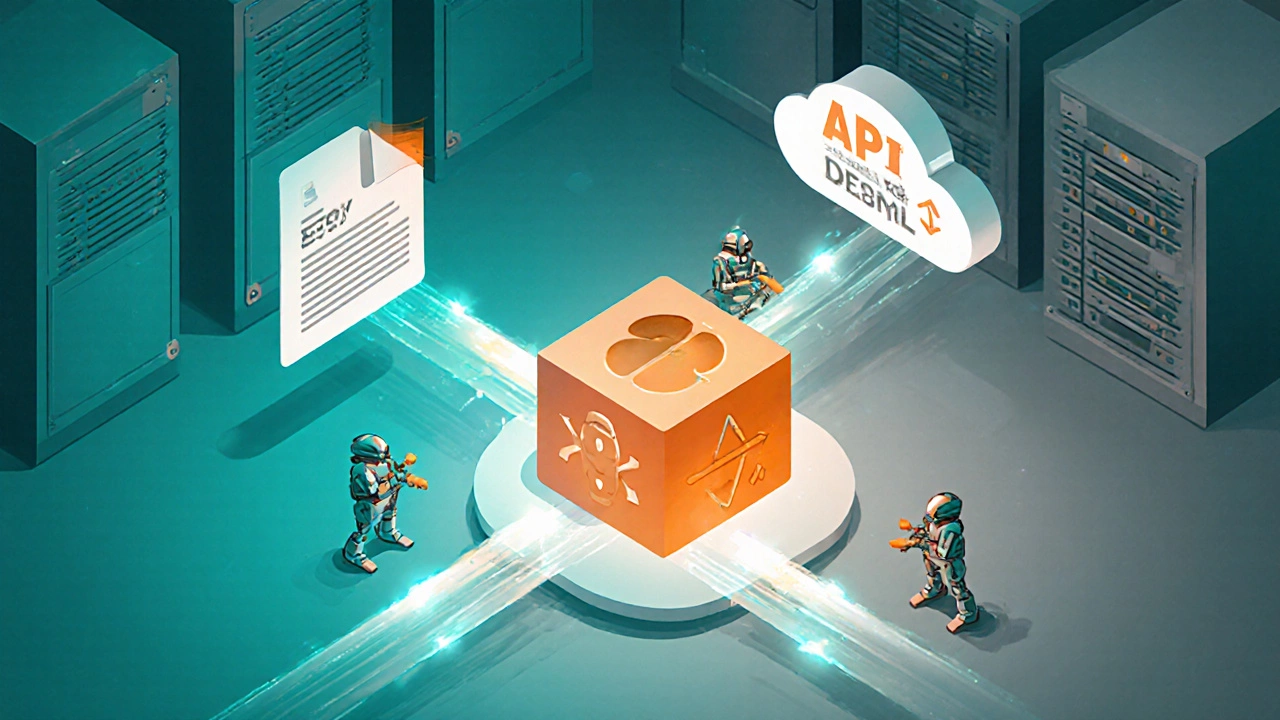Best Programming Language for SEO in 2025: A Practical Guide
SEO Language Selector Tool
Choose Your Project Criteria
Select how your project aligns with these key factors to get your recommended language
Recommended Language
No selection made yet
Select your criteria to get personalized recommendations
When you hear Programming language for SEO is a coding language that developers use to build tools, scripts, and automations that influence search‑engine visibility. It’s the backbone of everything from site audits to rank‑tracking bots.
Key Takeaways
- Python shines for data‑heavy SEO tasks and has the richest library ecosystem.
- JavaScript is essential when you need to manipulate page rendering or work with modern front‑end frameworks.
- PHP remains the go‑to for server‑side SEO tweaks on popular CMS platforms.
- Go and Ruby offer speed and concurrency benefits for large‑scale crawling.
- Choosing the right language depends on project size, team skillset, and integration needs.
Why the Choice of Language Matters for SEO
Search engines evaluate page speed, structured data, and crawlability-all of which can be programmatically improved. The language you pick determines how easily you can:
- Fetch and parse HTML at scale.
- Interact with APIs like Google Search Console or Bing Webmaster Tools.
- Generate or modify
sitemap.xmlfiles on the fly. - Automate repetitive tasks such as rank tracking, backlink monitoring, or content gap analysis.
In short, the right language becomes a productivity multiplier for any SEO operation.

Top Languages Used in SEO Workflows
Below are the most common choices, each introduced with a short micro‑definition.
Python is a high‑level, interpreted language praised for its readability and extensive data‑science libraries. Its ecosystem includes BeautifulSoup for scraping, pandas for data manipulation, and Google‑API‑Python‑Client for Search Console access.
JavaScript (Node.js) is a runtime that lets you write server‑side code with the same language browsers use for rendering. It excels at headless browsing with tools like Puppeteer and can directly manipulate DOM elements that influence Core Web Vitals.
PHP is a scripting language deeply embedded in WordPress, Drupal, and many other CMS platforms. Because most SEO plugins are PHP‑based, custom tweaks can be inserted without extra infrastructure.
Go (or Golang) is a compiled language designed for concurrency and low‑latency networking. It powers fast crawlers that need to process thousands of URLs per second.
Ruby is a dynamic language known for its elegant syntax and the Rails framework. SEO teams that already use Rails for web apps find it easy to extend with gems like seo‑friendly‑urls.
Decision Framework: How to Pick the Right Language
Think of the choice as a three‑axis matrix: Data Complexity, Integration Depth, and Team Expertise. Ask yourself:
- Data Complexity: Does your project involve heavy statistical analysis or machine‑learning models? Python’s scikit‑learn and TensorFlow give you a head start.
- Integration Depth: Are you building directly into a WordPress site? PHP will let you hook into existing filters and actions without extra layers.
- Team Expertise: Does your crew already know JavaScript for front‑end work? Extending that knowledge to Node.js reduces onboarding time.
Map each project requirement onto these axes, then rank languages by how many axes they satisfy.
Comparison Table
| Language | Popularity (Stack Overflow 2025) | SEO Library Ecosystem | Speed for Crawling | Learning Curve | Best Fit Use‑Case |
|---|---|---|---|---|---|
| Python | 30% | Rich (BeautifulSoup, Scrapy, pandas) | Medium | Easy | Data analysis, rank tracking, automated reporting |
| JavaScript (Node.js) | 22% | Growing (Puppeteer, Cheerio) | Fast (event‑driven) | Medium | Headless rendering, Core Web Vitals, SPA SEO |
| PHP | 15% | Moderate (Yoast, WP‑CLI) | Medium | Easy | CMS‑level tweaks, on‑page automation |
| Go | 8% | Limited (Colly, Go‑query) | Very Fast | Steep | Large‑scale crawling, real‑time monitoring |
| Ruby | 5% | Small (seo‑friendly‑urls) | Medium | Medium | Rails‑based platforms, custom SEO services |
Real‑World Scenarios
Scenario 1 - Bulk Keyword Gap Analysis: A digital agency needed to scan 10,000 competitor pages each month. Using Python’s Scrapy combined with pandas, they built a pipeline that fetched HTML, extracted title tags, and produced a CSV report in under three hours. The same task in PHP would have required custom cURL handling and lacked the data‑frame convenience.
Scenario 2 - Rendering JavaScript‑Heavy Pages: An e‑commerce brand was losing traffic because Google could not see product details rendered client‑side. They switched to Node.js with Puppeteer, created a nightly server that pre‑rendered critical pages to static HTML, and saw a 12% lift in organic impressions within a month.
Scenario 3 - Real‑Time Crawl Budget Management: A news portal needed to respect Google’s crawl budget while serving fresh articles. Engineers wrote a Go service using Colly that fetched URLs concurrently, checked Last‑Modified headers, and fed results into the CMS queue-cutting crawl‑budget overruns by 40%.
Common Pitfalls and How to Avoid Them
- Choosing based purely on hype: A language may be trendy (e.g., Rust) but lack SEO‑specific packages, leading to extra development time.
- Ignoring hosting constraints: Some shared hosts only support PHP; deploying a Python app may require a VPS, adding cost.
- Over‑optimizing for speed at the expense of maintainability: Go’s speed is great, but a steep learning curve can slow down future hires.
- Not handling rate limits: APIs like Google Search Console enforce quotas. Use exponential backoff logic regardless of language.
Next Steps for Your SEO Tech Stack
- Audit your team’s current skill set. If most developers know JavaScript, start with Node.js.
- Identify the most time‑consuming SEO tasks you automate today. Match them to language strengths (e.g., data analysis → Python).
- Prototype a small script in the top two candidates. Measure development time, execution speed, and library availability.
- Pick the language that delivers the best balance of speed, ecosystem, and team comfort.
- Document coding standards and schedule regular code reviews to keep SEO logic transparent.
Frequently Asked Questions
Is Python always the best choice for SEO automation?
Python tops the list for most data‑heavy SEO tasks because of its mature libraries and easy syntax. However, if you’re deep inside a JavaScript‑centric stack or need server‑side rendering tricks, Node.js might integrate more smoothly. The "best" language always depends on the specific workflow and existing tech stack.
Can I use multiple languages together?
Absolutely. Many teams run Python for data pipelines, Node.js for headless browsers, and PHP for CMS hooks. Just make sure you have clear interfaces (e.g., CSV, JSON, or REST endpoints) so each component talks reliably.
What about newer languages like Rust or Kotlin?
They offer speed and safety, but the SEO ecosystem is still thin. You’ll spend more time building low‑level HTTP handling and parsing logic. Unless performance is a critical bottleneck you can’t solve with Go or Node.js, stick with the established options.
How do I handle API rate limits in my scripts?
Implement exponential backoff: after a failed request, wait 1second, then 2seconds, then 4seconds, and so on, up to a max delay. Most languages have retry libraries (Python’s tenacity, Node’s retry) that handle this pattern out of the box.
Should I worry about SEO when using headless browsers?
Headless browsers mimic what a real user sees, which is great for indexing JavaScript‑heavy sites. Just ensure the rendered HTML is served to crawlers-either via dynamic rendering or pre‑rendering-and that you respect Google’s guidelines on cloaking.





